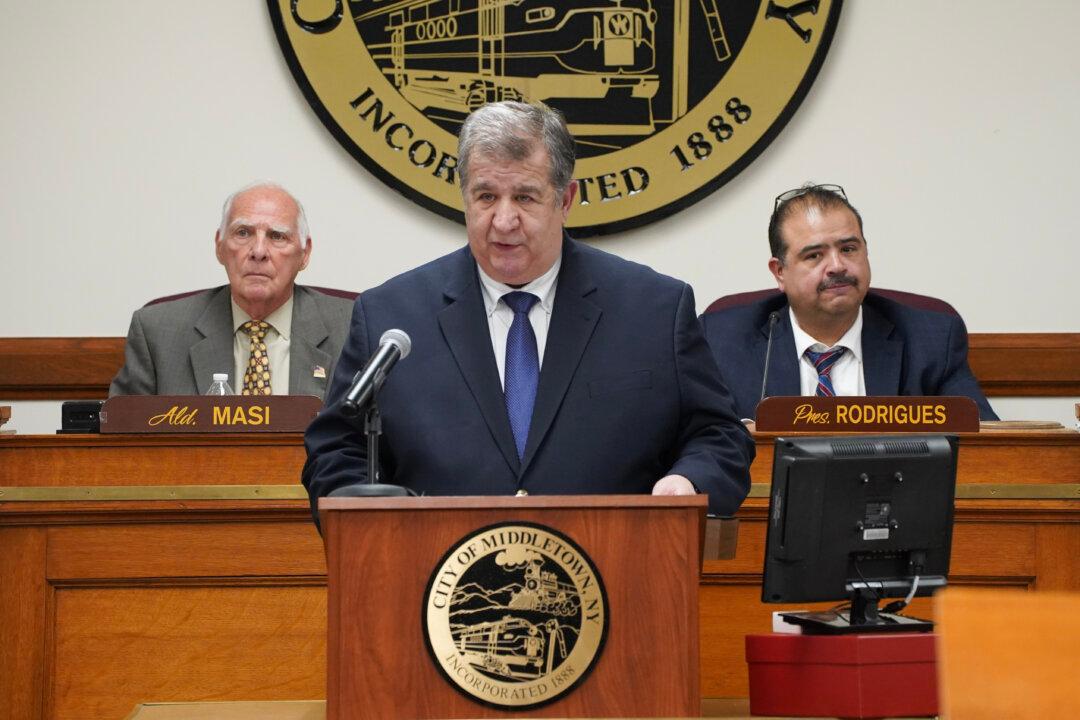A hired water resources engineer on May 21 updated Middletown councilmembers about the reasons behind the last algae bloom and ways to enhance the resiliency of the city’s reservoir system.
After an unusual algae bloom caused odor and taste issues in the water supply system during the fall of 2022, the city hired Boston-based CDM Smith to examine its reservoir conditions and come up with recommendations to prevent such incidents from happening again.
The study also presents an opportunity to search for alternatives to the city’s longtime practice of treating algae with copper sulfate, according to Jacob Tawil, commissioner of the public works department.
“I am concerned about the cumulative effect of copper in the bottom of our reservoirs,” Mr. Tawil told The Epoch Times, “It is not doing anything bad to us right now, but it is worth planning—like the mayor keeps saying, ‘We are planning for the next 100 years.’”
“There is nothing more important than a safe water system,” Mayor Joseph DeStefano told The Epoch Times. “We want to make sure we are doing the right thing and protecting our residents.”
According to CDM Smith engineer Zack Eichenwald at the council meeting, a unique combination of events—including warm temperatures, high winds, and a unique kind of algae that feed on organic matter—caused the algae to bloom inside the Monhagen reservoir in 2022.
Algae feed on sunshine and nutrients, and nutrients likely multiplied that fall as high winds stirred up phosphorous that had settled down in the bottom of the reservoir, he said, adding that as treated algae dissolved into organic matter, it became new fuel for the bloom.
“It is very important to treat algae in the very beginning,” he said. “If you start to treat it during the bloom or towards the end of the bloom, your treatment is less effective ... [and] it can even enhance the bloom if the conditions are right.”
He added that algae grow in natural environments like lakes and reservoirs and could benefit ecosystems when their concentration is controlled for water quality.
A comprehensive algae control plan entails identifying and managing the external and internal sources of nutrients that it feeds on, and in the case of Middletown, it is phosphorus, he said.
Kinch Pond, a water body that feeds city reservoirs by gravity, has a high level of phosphorus and merits additional study, he said.
He added that the city’s continued purchase of watershed properties with state grants for water protection will also help reduce the amount of phosphorus running into reservoirs.
As for internal sources, Mr. Eichenwald said that a large amount of phosphorus was found to be regenerated within the reservoirs, and certain lake treatments might be warranted.
Meanwhile, CDM Smith has been jar testing a new algaecide based on hydrogen peroxide, which is less toxic to aquatic life than copper sulfate. With satisfactory results so far, the company recommends testing the algaecide on a larger scale as a next step.
The firm’s reservoir water quality study costs around $120,000, according to a proposal by CDM Smith.
CDM Smith Vice President Keith Kelly was also present at the city council meeting on May 21.







